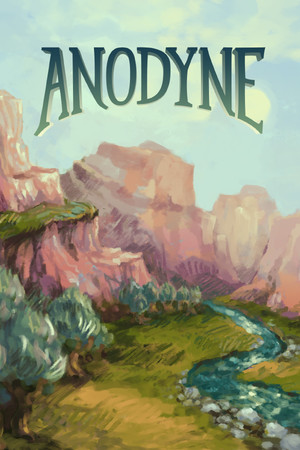I was going to play Darksiders, but my first impression of it is a bland beat ‘em up with little variety outside which of the 5-6 enemies get spammed at you in the flat arena. I finally gave up when I made it to the (first?) Gryphon section and realized I couldn’t move the aiming reticle, meaning I couldn’t attack enemies on the edges of the screen, so I went ahead and uninstalled it and played one of the games from that 1700+ itch.io bundle from a while back.

This is a Zeldaclone. You can move in the cardinal directions (including diagonally), and not long into the game, you get a weapon that stabs directly in front of you like in the original Legend of Zelda (no broad slashes like in Link’s Awakening or Oracle of Ages/Seasons). Later on, you get the ability to jump, and this soon becomes another staple of gameplay as you’ll need to jump over pits, spikes, and even enemies. However, the top-down perspective combined with the lack of a consistent drop-shadow (absent when you’re standing, tiny when you’re at the peak of your jump, and invisible when you’re over a pit) does make it tricky to know where you are in relation to everything. The game does have controller support, but it wouldn’t let me map movement to the D-pad on my Xbox 360 controller; I had to use the left stick, which didn’t help with accuracy (for one, lack of a proper deadzone meant letting go of forward would sometimes have me facing backwards, away from the hazard I was trying to hit).
If you read some of my previous posts, you might remember I’ve been waiting for a proper top-down level design game, and this one certainly delivers. There are a decent variety of enemies, but you’re not just fighting the enemies; there can often be spikes in the room you’ll need to avoid, or even moving hazards like a spike-roller or rotating sparks. EDIT: You don’t even always have to kill all the enemies in a room to progress; often, just avoiding the hazards is enough of a challenge (unlike many hack ‘n’ slashes where you can just run/dodge past them if you’re not forced to confront them). Unfortunately, there are some less-than-intuitive moments, like how you can’t jump over the light-blue-green lasers in the beach/ocean dungeon (despite most other hazards being jumpable), meaning you just have to stand there and wait for them to disappear. There are also enemies that’ll spray projectiles in the air in random directions, and their projectiles’ drop-shadows have the same issues as yours, which can make it hard to track and avoid them (especially during the hotel dungeon’s boss when the arena gets crowded with airborne projectiles; I can’t help but wonder if you’re supposed to tank damage for some of these bosses).
I can forgive some of those issues since I know how rare having-level-design is for a hack ‘n’ slash, but then we get to the Adventure Game part of this Action-Adventure. For one thing, the overworld you need to explore in order to reach the dungeons in the first place is unnecessarily large and empty. Towns with NPCs you can talk to are one thing, and you could even argue the grassland works as a sort-of hub to branch towards the dungeons, but the forest and cliffs are also filled with empty screens (maybe you’ll fight a couple slimes or a dog occasionally). Even within dungeons, the adventure side of things isn’t developed nearly as well as the action: most of it is just baiting enemies onto a switch so you can stand on the other one and open the door, and the game only “builds” on this by having you manipulate different enemies. Sometimes, it isn’t even that; the enemy is already on a set path and you just have to hit the (delayed) switch in time to swap the blocks; it’s really boring. Worse still is those cards you thought were optional are actually required to reach the final dungeon, and quite a few of those cards are obtained from wandering around the empty overworld (some of which are only accessible from easily-missable one-tile-wide paths that blend into nearby solid tiles).
But the worst part of the game is right before the final dungeon(s?): you get the ability to swap two tiles, and the riddle tells you to swap the four colored blocks (red, blue, green, and purple) with the four tiles representing past bosses (super low-res and hard to make out), and the swaps have to be according to their “spirit color” or something. Thing is, three of the six bosses are blue, one is red, one is red and blue, and the last one is orange! No green…well, the final boss is green, but you wouldn’t know that at this point. Also, while I was trial-and-erroring my way through, the gate opened once I had all boss tiles in front of it, even though one of the boss tiles started in front of it. So, was I supposed to swap it with its color and swap it back, or do wrong swaps just not count against me if I don’t leave the screen? This part just makes no sense.
Overall, this one’s hard to recommend. Yeah, it’s a top-down action game with actual level design and a progressive difficulty curve, but it also has quite a few cheap hits, along with an empty overworld and arbitrary riddles to boot. If you got that itch.io bundle, I say it’s worth a playthrough; just keep a walkthrough handy and don’t bother with postgame content (I saw Nitrorad’s review; it’s just more cards and riddles). Otherwise, wait for a really good sale.